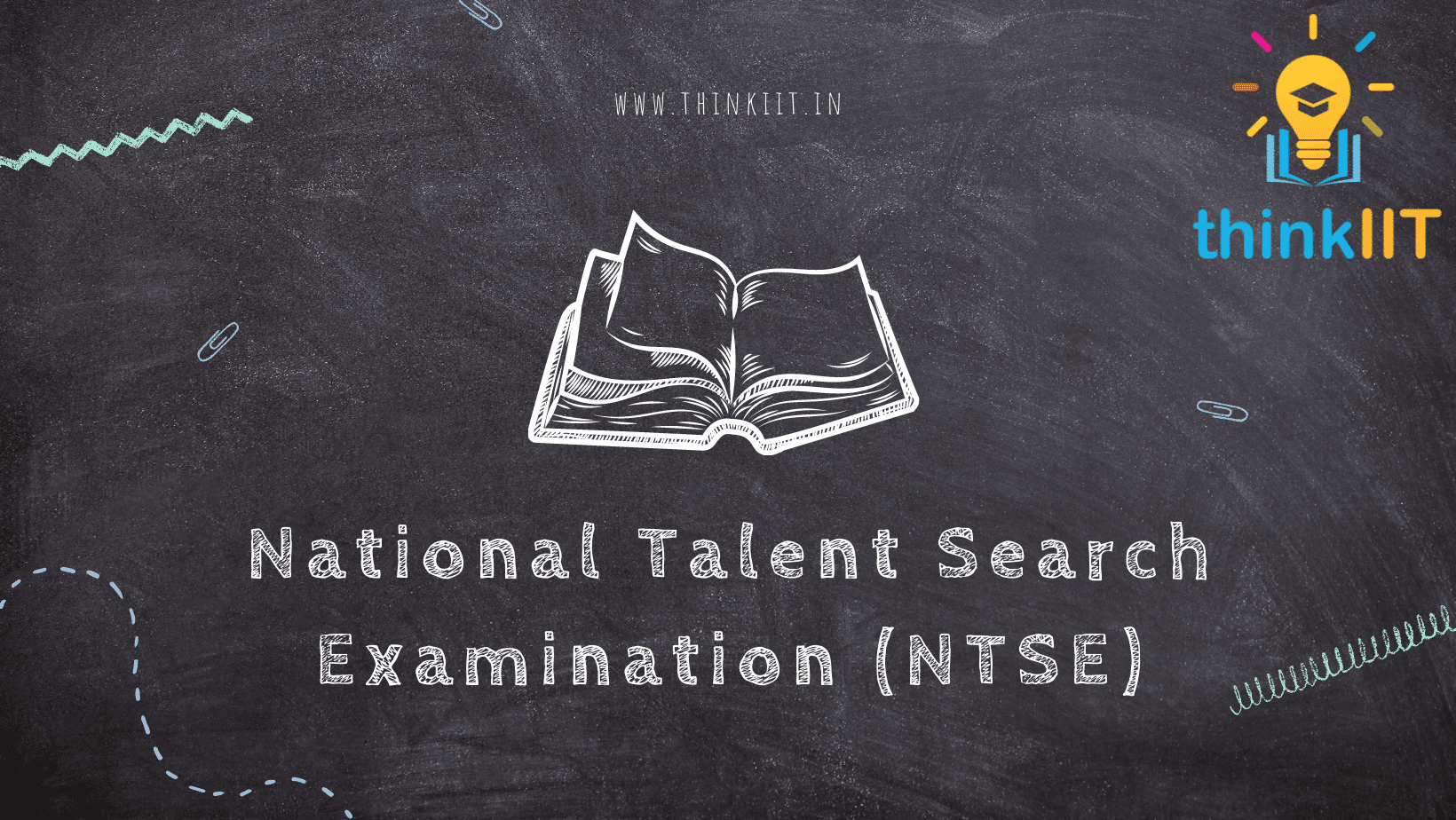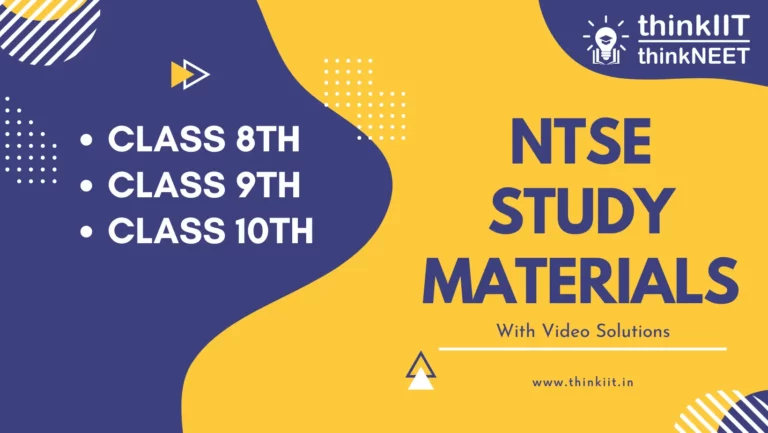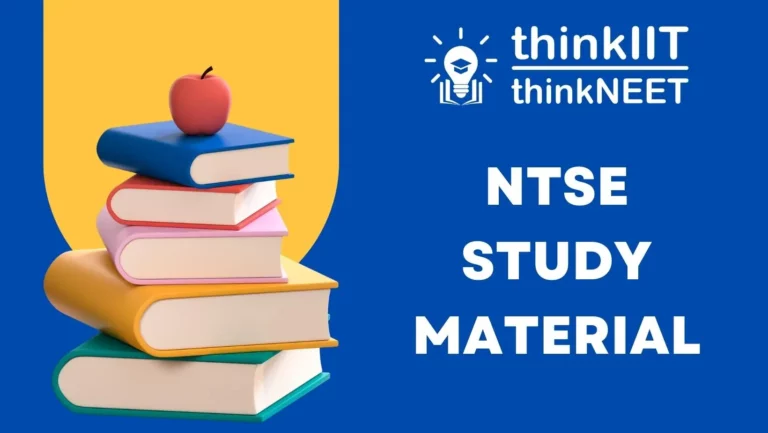National Talent Search Examination
The National Talent Search Examination (NTSE) is a national scholarship program in India that was established in 1963. The scheme’s primary purpose is to discover and support gifted students. Every year, the NTSE Exam 2021 is given at two levels: Stage 1 (State Level) and Stage 2 (National Level). As a result, to be eligible for the scholarship program, applicants must pass both stages of the exam.
The first stage exam is a state-level examination that is administered by all Indian states and UTs. NTSE stage II, on the other hand, is only for students who have passed the first stage. As previously stated, only individuals who pass the NTSE Stage I exam will be allowed to take the Stage II exam. These are the primary criteria.
Meanwhile, the goal of conducting NTSE is to provide scholarships to eligible candidates who wish to pursue further education in the fields of Science or Social Studies. Students will be able to continue their studies in their selected field thanks to these scholarships.
The NTSE scholarship will be awarded based on students’ total achievement in both parts of the examination.
NTSE Eligibility for Stage 1 (State level examination)
Due to the country’s COVID circumstance, there is no specific date for registration or the date of the exam, but students studying in Indian schools are eligible to take the stage 1 exam.
The following are the eligibility requirements:
- The aspirant must be a Class X student from any of India’s government or private schools.
- There is no domicile restriction. The candidate may be from any Indian state or union territory.
- Candidates enrolled in open or remote learning are also eligible to write the NTSE 2022 if they are under the age of 18, unemployed, and taking the Class X board test for the first time.
Eligibility for Stage 2 (National level examination)
Only students who passed the Stage 1 (state-level examination) are eligible to take the Stage 2 exam. NCERT would communicate the roll number, venue, and date of the examination to the shortlisted candidates via its official website.
Eligibility Criteria For Students Studying Abroad
Indian residents studying abroad may also take the NTSE exam under the following conditions:
- The student must be of Indian origin.
- If the candidate is in class 10th or equivalent, he or she is automatically eligible for Stage 2.
- The candidate must have received a minimum of 60% on class IX final exams.
- The candidate must select an examination center in India.
- He/she must submit a request to the Department of Educational Survey Division, NCERT, along with the attested clas IX mark sheet from the institution where he/she is studying.
- The candidate is only eligible for the scholarship if he or she continues his or her education in India.
Scholarship
The Indian government provides NTSE scholars with a stipend of Rs 1250 per month for Class XI and XII and Rs 2000 per month for graduation and higher education.
Aside from that, becoming an NTSE scholar provides the following advantages:
• The UPSC-organized NDA National Defence Academy Exam gives an advantage to NTSE scholars.
• Reputable engineering colleges for information technology, such as IIIT-Hyderabad, give 15 seats to NTSE scholars. This institute is regarded as the equivalent of IIT-Bombay.
• NTSE students will have an advantage in foreign university admissions.
• Preference for numerous jobs in the public and private sectors.
• NTSE scholars are given ‘extra marks’ at IIIT-Delhi, a Government of Delhi Engineering College.
Application Form
Students who are interested in taking the NTSE should contact the State/UT Liaison officer. The completed application form should be signed by the school’s principal well in advance of the deadline for submission. After the deadline for submitting the Application Form, no applications will be accepted.
Varying states may have different submission deadlines. Students are recommended to double-check and confirm the dates with their state’s Liaison Officer. The address and phone number of the State/UT Liaison Officers are provided (state-by-state) on NCERT’s website www.ncert.nic.in.
Candidates should be aware that only State Liaison Officers will be able to answer their questions about the application form (LOs). They must not submit their application to NCERT.
In terms of application fees, the states and union territories will set a certain sum and notify candidates of the amount they would need to pay. Before filling out and submitting their application forms, candidates should research the fees for the Stage-I Examination. Also, confirm with the respective State Liaison Officers about the fee payment method (LOs). The NCERT does not charge a fee for the Stage-II exam.
Result
The NTSE 2022 results will be released in the form of a merit list. In the result file, students will be able to see their scores, names, and roll numbers. Students must look for their registration number, roll number, or name on the merit list.
Only students who pass stage 1 will have their names listed in the pdf and will be permitted to sit for stage 2 of the NTSE exam. The outcome of stage 2 will be disclosed online in September 2022. Along with the outcome, students will be able to view the NTSE cut-off.
Syllabus
There is no set syllabus for the NTSE, however, experts have devised one based on past year paper analyses. The curriculum covers all of the fundamentals of 9th and 10th grades.
MAT Syllabus
Verbal Reasoning MAT (Mental Ability Test):
| Analogy | Puzzle Test | Alphabet Test |
| Classification | Logical Venn diagrams | Blood Relations |
| Series | Logical sequence of words | Verification of truth of the statement |
| Coding-Decoding | Problems on clocks | Analytical reasoning |
| Direction Sense Test | Series completion test | Arithmetical reasoning test |
| Mathematical operations | Inserting a missing character | Tests |
Non-Verbal Reasoning MAT (Mental Ability Test):
| Classification | Series | Analogy |
| Transparent paper folding | Embedded figure | Dot fixing situation |
| Analytical Reasoning | Water images | Problems on cubes and dice |
| Incomplete Figures | Folding Papercutting |
SAT Syllabus
Science Syllabus (Physics, Chemistry, Biology):
| Acids Bases and Salts | Carbon and its Compound | Air |
| Cellular Level of Organization | Fibers and Plastics | Diversity in Living Organisms |
| Food Production & Management | Human Body | Heredity and Evolution |
| Life Processes | Magnetic & Electricity at Work | Light |
| Measurement | Micro-Organisms | Metals & Non-Metals |
| Motion and Force | Periodic Classification of Elements | Our Environment |
| Reproduction | Some Common Diseases | Soil |
| Sound | Structure of Atom | Sound of Energy |
| The Universe | Work and Energy | Water |
Social Science Syllabus (History, Geography, Civics):
| British Raj | Culture, Science and Literature | Democracy and Elections |
| Diversity and Livelihood | Early Medieval Period | Early States |
| Eighteen Century Political Formation | Introduction and Sources of Ancient Indian History | India and its Neighbours |
| Local and State Government | Indian Economics | Indian Freedom Struggle |
| Indus Valley Civilization | Industrial Revolution | Industries |
| Internal Structure of the Earth and Rocks | Resources and Development | Jainism, Buddhism and Conquerors from Distant Lands |
| The Delhi Sultanate | The Mughal Empire | Motion of the Earth |
| Nationalism in Various Countries | Vedic Period | New Empires and Kingdoms |
| The Judiciary | Popular Movements and Social Reforms | Population |
| UN and International Agencies | Medieval Architecture and Culture | Natural Vegetation |
| French Revolution | Our Country- India | Union Government |
| Indian Constitution | Solar System | The Mauryas |
| Water Resources | World History |
Math Syllabus:
| Algebraic Expressions | Arithmetic | Arithmetic Progressions |
| Basic Geometry | Direct & Inverse Variations | Coordinate Geometry |
| Percentage & Its Application | Exponent | Statistics |
| Mensuration | Number System | Square & Cube Roots |
| Playing with Number | Surface Areas and Volume | Quadratic Equations |
| Rational Numbers | Trigonometry | Circles & Triangles |
| Linear Equation | Probability | Simple & Compound Interest |
NTSE 2022 Exam Structure
- The paper is broken into two sections: SAT and MAT. Both the SAT and the MAT include 100 questions (Maths – 20, Science – 40, Social Science – 40).
- Both the MAT and the SAT last 120 minutes, or 2 hours.
- There are no negative points. Candidates who pass both tests will be evaluated individually for merit.
- The candidate who is eligible for the scholarship will be chosen based on his/her cumulative MAT & SAT score.
NTSE 2022 Exam Date
| Event | NTSE 2022 Dates |
| Start Date of NTSE 2022 Registration form | October 2021 |
| NTSE Application Last Date | November 2021 |
| NTSE Stage 1 Admit Card Release Date | Around 7-10 days before the exam |
| NTSE Stage 1 for Nagaland, Mizoram, Meghalaya and Andaman & Nicobar islands | |
| NTSE Stage 1 exam date 2022 (for other states and UTs) | |
| NTSE Stage 1 exam date for West Bengal, Andhra Pradesh, and Telangana | |
| Stage- 1 Result | May 2022 |
| NTS Stage- II Admit Card 2022 | Two or four weeks before the exam |
| NTSE Stage 2 Exam Date | July 2022 |
| NTSE Final Results | September 2022 |
Powered By thinkIIT



